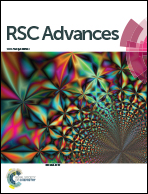Analysis of aroma components from sugarcane to non-centrifugal cane sugar using GC-O-MS
Abstract
A total of 84 volatile aroma components were determined in the 9 samples of sugarcane to non-centrifugal sugar (NCS), including 15 alcohols, 12 aldehydes, 10 ketones, 17 carboxylic acids, 11 pyrazines, 7 phenols, 3 esters, 3 hydrocarbons, and 2 sulfur compounds. Of these compounds, 10 were with high flavor dilution (FD) factors based on the aroma extract dilution analysis (AEDA). 4-Hydroxy-2,5-dimethyl-3(2H)furanone exhibited the highest FD factor of 2187, followed by (E)-2-nonenal, 2-hydroxy-3-methyl-2-cyclopentene-1-one, and 4-allyl-2,6-dimethoxyphenol with a FD factor of 729. The odor compounds showed no significant change and were similar to that of sugarcane during the first four steps in the production of non-centrifugal cane sugar. In the middle three stages, the heating slightly affected the aroma composition. Additionally, a prolonged period of high-temperature heating, lead to the production of the Maillard reaction products, such as pyrazines, pyrroles, and furans, differentiating the step to be unique from the previous seven stages. However, the content of the NCS odorants was significantly reduced due to the loss of odor compounds during the drying process.



 Please wait while we load your content...
Please wait while we load your content...